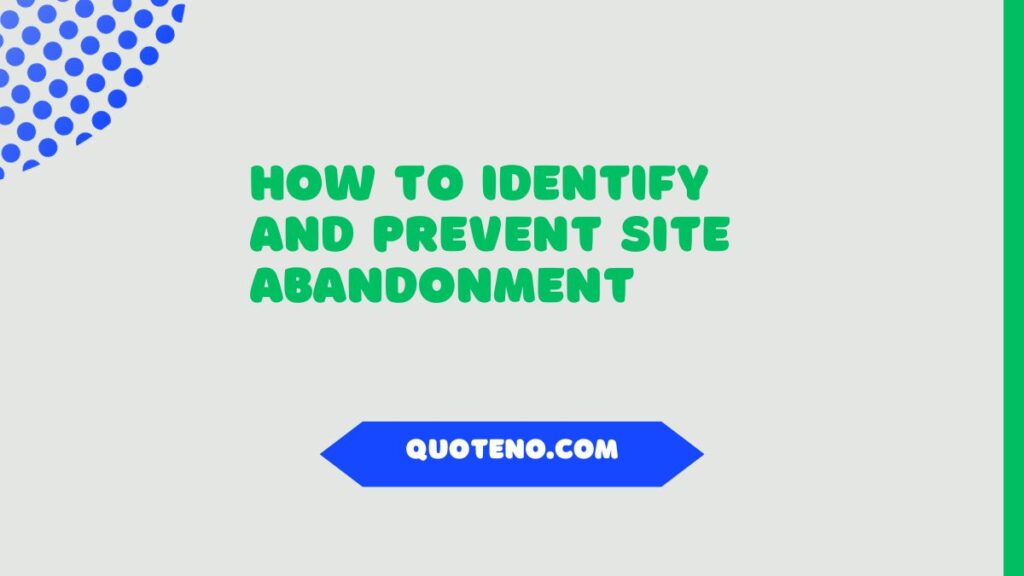A shopper who abandons a product page might be searching for price comparisons or need clarification about your product. To help convert these visitors into customers, you can send personalized browse abandonment emails sharing products related to the shopper’s interest or bestsellers similar shoppers bought.
Table of Contents
Bounce Rate
The bounce rate is a crucial metric to look at when trying to understand website effectiveness. However, it is essential to note that this metric doesn’t necessarily indicate a site’s quality. The metric only tells you about visitors who come to your website and leave without clicking on any calls to action or visiting any other pages.
Bounce rates can be higher for certain types of websites. For example, news sites and blogs often bounce higher because people land on the page to read a specific article and then leave. This is good, but it may indicate that additional content is needed to engage visitors and get them further down the conversion funnel.
Another common cause of high bounce rates is slow-to-load pages. According to Google, a slow website is a ranking factor and can significantly impact site traffic. This is especially true for users on mobile devices.
Time on Site
A visitor’s time on your website is an important metric that offers insights into site engagement and usability. It aids in identifying problematic areas of your website, such as site abandonment, and can help influence digital marketing strategies.
For example, if you notice that many visitors are spending a lot of time on your search pages, this may indicate that they’re looking for specific products or services and may need help finding what they need. This would be an ideal time to implement a targeted product recommendation solution that could help address their needs.
Browse abandonment emails are effective for recapturing visitors who leave your website without adding items to their cart or making a purchase. The key to these emails is personalizing them with a product or service recommendation that speaks to their onsite behavior and customer lifecycle stage.
Another tactic is to segment known visitors from unknown ones. Known visitors include:
- Logged-in users.
- People who’ve filled out a form.
- People are visiting from your marketing emails.
Page Load Time
Browse abandonment is when a shopper visits your website and views products but doesn’t place them in a cart or make a purchase. Any number of factors can cause this. For example, customers might stay satisfied if your website offers clear product descriptions or images. Similarly, they may keep their cart if there is information about shipping, payment, or returns. Finally, a lack of trust can prevent people from abandoning your site.
Page load time—also known as site speed—is the time it takes for a webpage to load and display in a browser window fully. It’s one of the most crucial web performance metrics and can directly impact user engagement and conversion rates.
Unknown visitors are people you can’t identify—they’re not logged in, haven’t filled out a form, or clicked on a marketing email. However, it’s easy to get to know them with a simple tool like Sematext’s free monitor that tracks their behavior and sends you alerts when there’s an issue.
Conversion Rate
Unlike cart abandonment, browse abandonment happens when a visitor looks at multiple products but doesn’t add anything to their cart. While it may not reflect the same level of purchase intent as cart abandonment, it still reflects interest in your products. This can be an excellent opportunity for brands to convert these known visitors into repeat customers with browse abandonment emails.
This type of automated email can include product images, a clear call-to-action, and personalized product recommendations. These could be related products that complement the one they browsed (i.e., a bed and sheets) or bestsellers they might have seen in their product search.
Browse abandonment automation can also be triggered by using exit intent pop-ups that ask for their email before they leave the site or when they click on a link to navigate away from the product page. This lets you reconnect with shoppers before they forget their cart and abandon the site forever.
- 5 Must-Visit Travel Destinations to Enrich Your Knowledge of History and Culture - May 17, 2024
- 5 Services Your Small Business Needs ASAP - May 13, 2024
- Maintaining Home Integrity: The Unseen Value of Gutters - May 13, 2024

